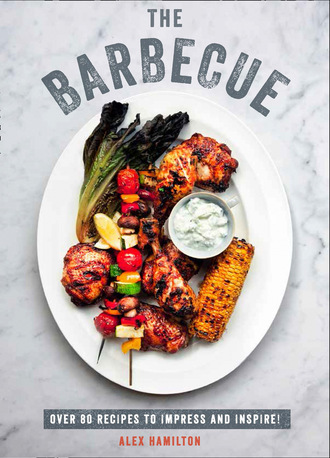
Полная версия
The Barbecue

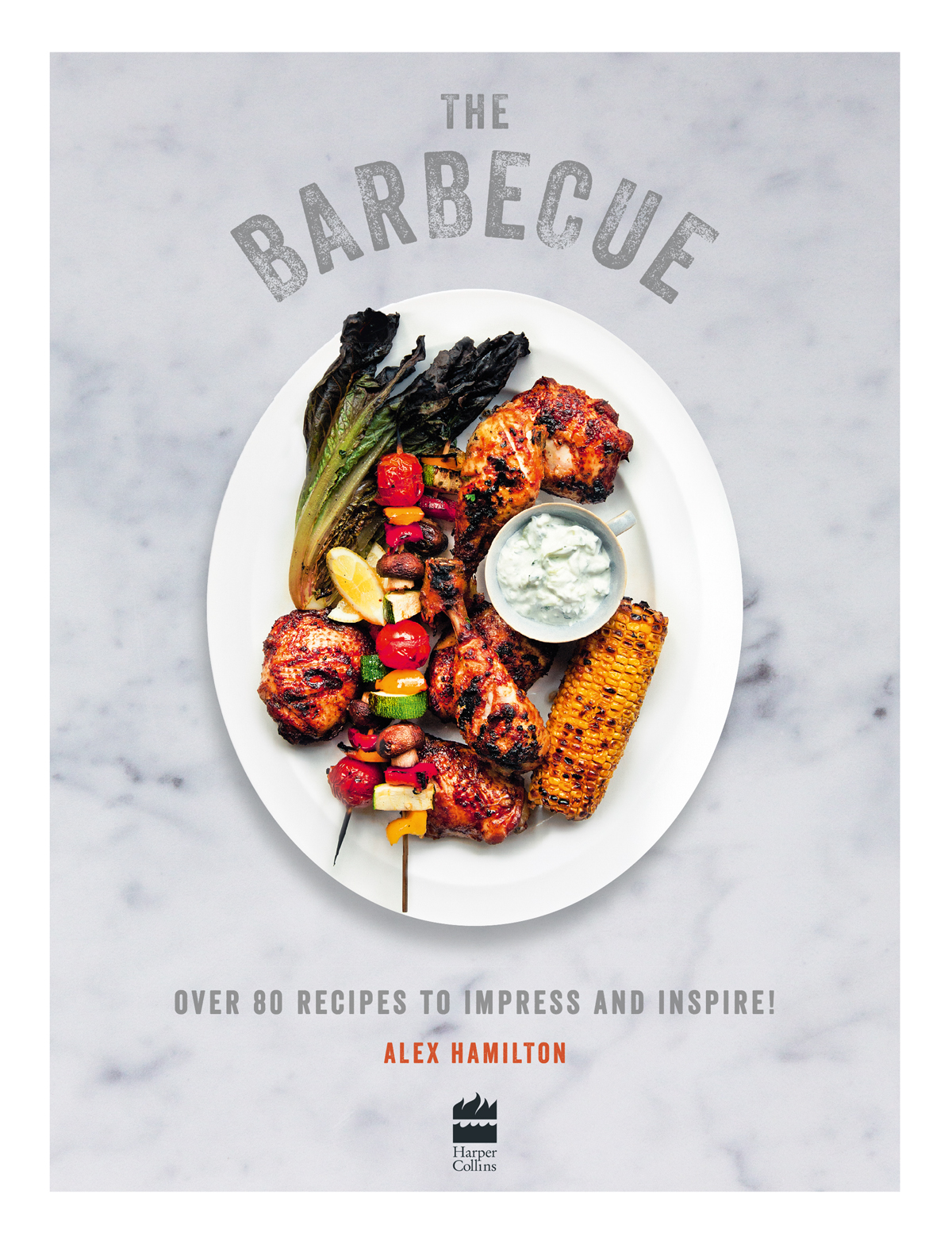
COPYRIGHT
HarperCollinsPublishers
1 London Bridge Street
London SE1 9GF
www.harpercollins.co.uk
First published by HarperCollinsPublishers 2019
FIRST EDITION
© HarperCollinsPublishers Ltd 2019
Jacket design by Pene Parker © HarperCollinsPublishers Ltd 2019
Cover photographs by Charlotte Bland © HarperCollinsPublishers Ltd 2019
A catalogue record of this book is available from the British Library
Alex Hamilton asserts the moral right to be identified as the author of this work
Recipes: Alex Hamilton & Jo Jackson
Photography: Charlotte Bland
Design, Art Direction & Prop Styling: Pene Parker Design
Food styling: Rukmini Iyer
Food stylist assistant: Jo Jackson
Find out about HarperCollins and the environment at www.harpercollins.co.uk/green
Source ISBN: 9780008333973
Ebook Edition © November 2019 ISBN: 9780008333980
Version 2019-05-09
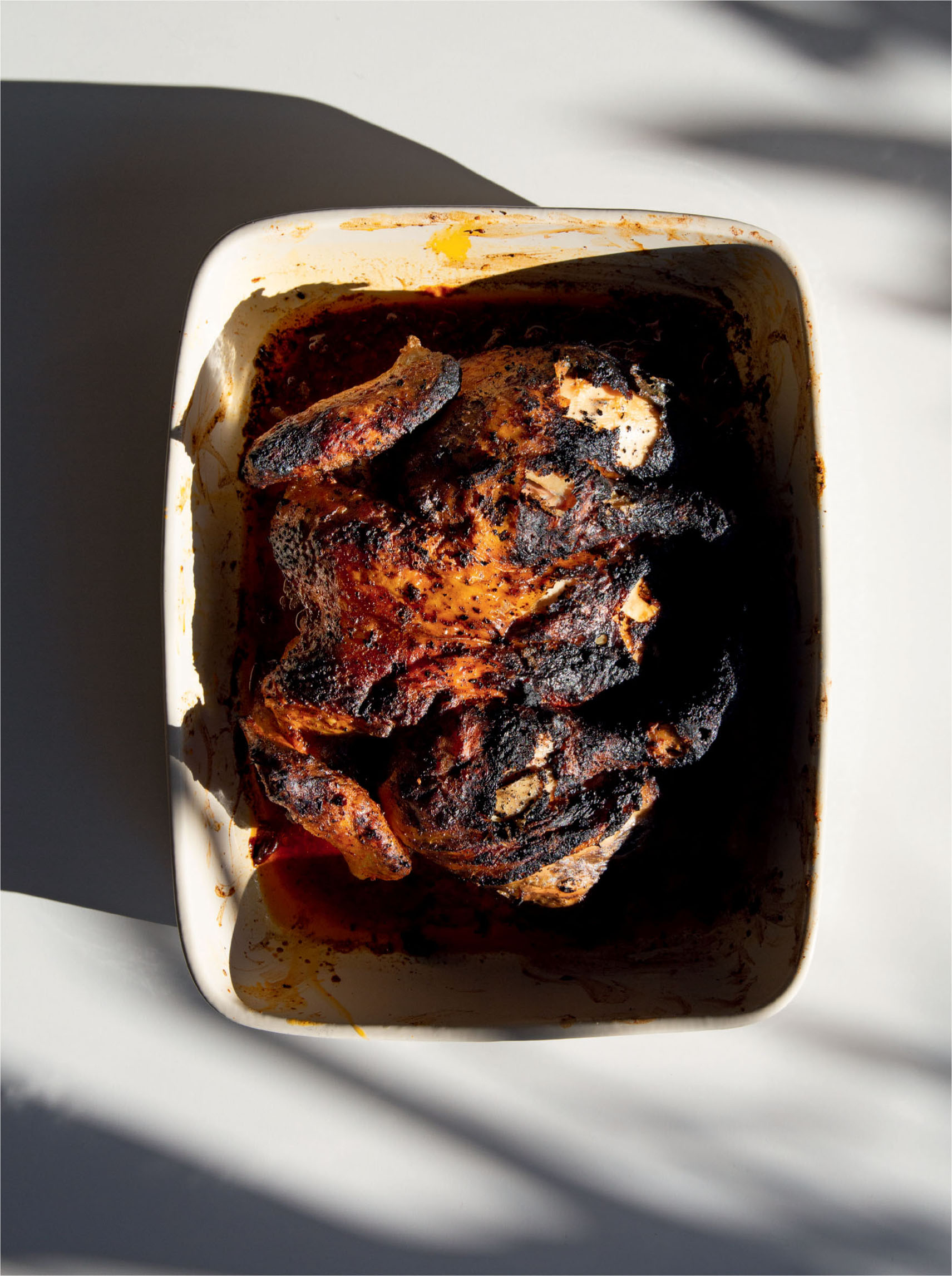
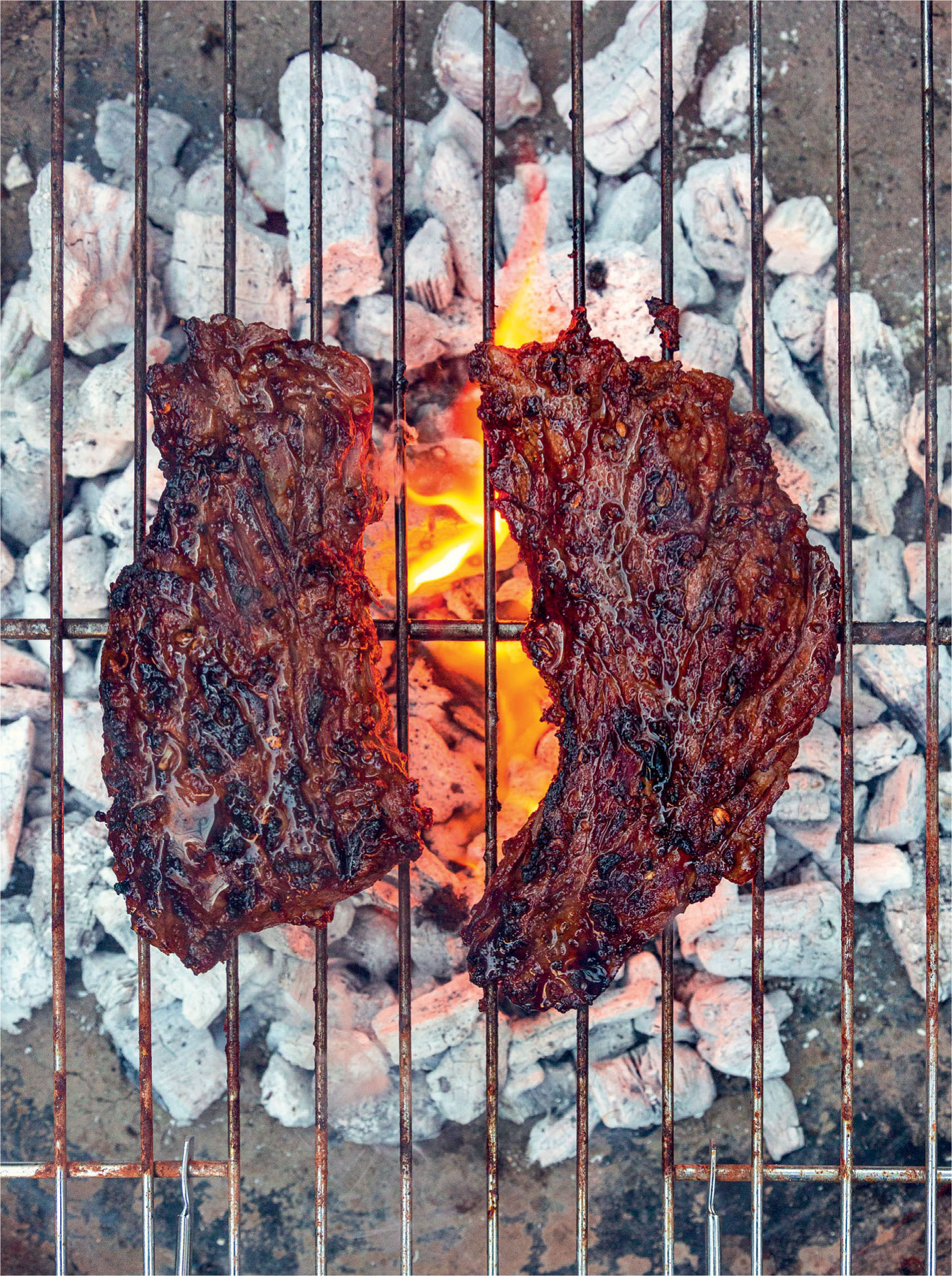
CONTENTS
COVER
TITLE PAGE
COPYRIGHT
HOW TO USE THIS BOOK
GAS VS CHARCOAL
ESSENTIAL KIT
THINGS ON STICKS
BEEF, PORK, LAMB & CHORIZO
SALMON
PRAWNS
VEGETABLES
HALLOUMI, PANEER & TOFU
CHICKEN
PEPPERCORN, SALT & LIME
LEMON, OREGANO & GARLIC
TANDOORI SPICES & YOGURT
ROSEMARY, CAYENNE & BROWN SUGAR
DIPS, SAUCES & PICKLES
MEXICAN CHILLI PEANUT SAUCE
HOT SATAY SAUCE
CORIANDER & LIME TZATZIKI
SIMPLE SOUR CREAM & SPRING ONION DIP
PERFECT GUACAMOLE
SPRUCE UP YOUR MAYO
ULTIMATE CHILLI OIL
SWEET HABANERO SAUCE
FIERY SCOTCH BONNET SAUCE
PINK PICKLED ONIONS
DILL PICKLES
QUICK KIMCHI
RIBS
RIBS
CLASSIC BARBECUE MARINADE
STICKY HOT CHIPOTLE MARINADE
JERK RIBS
CHICKEN
CHICKEN: THIGHS, DRUMSTICKS, SPATCHCOCKED
STICKY JERK CHICKEN
TANDOORI CHICKEN
KOREAN BARBECUE MARINADE
SMOKED PAPRIKA & LEMON CHICKEN
POLLO AL CARBON: ACHIOTE MARINADE
WHOLE VEG
WHOLE PORTOBELLO MUSHROOMS & ASPARAGUS
WHOLE AUBERGINE
WHOLE CAULIFLOWER OR CAULIFLOWER STEAKS
CORN ON THE COB & COS LETTUCE
CHERRY TOMATOES, POINTY PEPPERS & HALLOUMI
LONG-STEM BROCCOLI
PINK PEPPERCORN & CRUMBLED GOAT’S CHEESE DRESSING
CHILLI, LIME & CORIANDER DRESSING
LEMON, DILL & FETA DRESSING
BASIL, PINE NUT & GARLIC DRESSING
BLUE CHEESE, LEMON & WALNUT DRESSING
FISH
SEA BREAM & SALSA VERDE
GRILLED FISH TACOS
WHOLE RAINBOW TROUT
SPICED SALMON FILLETS & BARBECUE SPELT CHAPATIS
BURGERS, STEAKS & SLOW COOKING
CLASSIC BEEF BURGERS
BEEF & HIDDEN MELTED CHEESE BURGERS
PORK, FENNEL & APPLE BURGER
SPICY LAMB KOFTE BURGERS
SMOKY BLACK BEAN BURGERS
CHICKPEA & CARROT BURGERS
RIB-EYE STEAK
SIRLOIN, SKIRT OR BAVETTE STEAK
ADOBO MARINADE
CLASSIC MUSTARD, WORCESTER & THYME
LEMON, GARLIC & ROSEMARY
PORK PIBIL
BARBECUE BRISKET
SALSAS & SALADS
CLASSIC PICO DE GALLO/KATCHUMBER SALAD
MANGO SALSA
PICKLED WATERMELON RIND
PINEAPPLE, CHILLI & MINT SALSA
BLACK BEAN & SWEETCORN SALSA
VEGAN SUMMER SLAW
CLASSIC COLESLAW
HAIL CAESAR: THE ULTIMATE CAESAR SALAD WITH ROSEMARY CROUTONS
KOREAN SUMMER SLAW
WATERMELON, MINT, CUCUMBER & FETA SALAD
FENNEL, COURGETTE RIBBON & ORANGE SALAD
HERBED OR RAINBOW POTATO SALAD
CLASSIC POTATO SALAD
CLASSIC TOMATO PANZANELLA
DESSERTS
GRIDDLED MANGO WITH LIME & COCONUT
GRIDDLED NECTARINES, PLUMS & PEACHES WITH HAZELNUTS & ROSEMARY
CHOCOLATE PB & J S’MORES
GRIDDLED PINEAPPLE & WATERMELON WITH CHILLI-MINT SYRUP
ROASTED STRAWBERRY & MARSHMALLOW SKEWERS WITH CHOCOLATE SAUCE
MENU PLANS
LIST OF SEARCHABLE TERMS
ABOUT THE PUBLISHER
HOW TO USE THIS BOOK
This book is designed to be as user-friendly as possible, based on the idea that if you can get comfortable with one method for cooking something, then there’s an infinite variety of ways to make it different and exciting the next time you do it. So, instead of giving you six different chicken recipes, in this book you get just one simple template for the ‘hero’ recipe, followed by a series of marinades you can pick from as you wish. The same goes for ribs, steak and vegetables, which are just glorious on a barbecue alongside punchy dressings and interesting salsas and salads.
We kick off with ‘Things on Sticks’ instead of a starter section, because they’re a colourful, easy dish to prepare ahead, marinate, and stick on the barbecue as soon as your guests arrive. The main chapters (Ribs, Chicken, Whole Veg, Fish, Burgers, Steaks & Slow Cooking) are traditionally the stars of the show, and you can mix and match these, along with the tasty salsas and salads, depending on the occasion and how many you’re feeding! If you’re still hungry after the main event, the dessert section has some very easy but delicious recipes for barbecued fruit and indulgent s’mores.
Whether you’re barbecuing in your back garden, or packing bits and pieces into a coolbox to take to the beach or park, this book has mix and match options that should keep you going all summer, and well into the autumn too. Head here for menu plan ideas to curate the perfect barbecue party table, with something to suit everyone. For tips on gas vs. charcoal and essential kit, see overleaf.
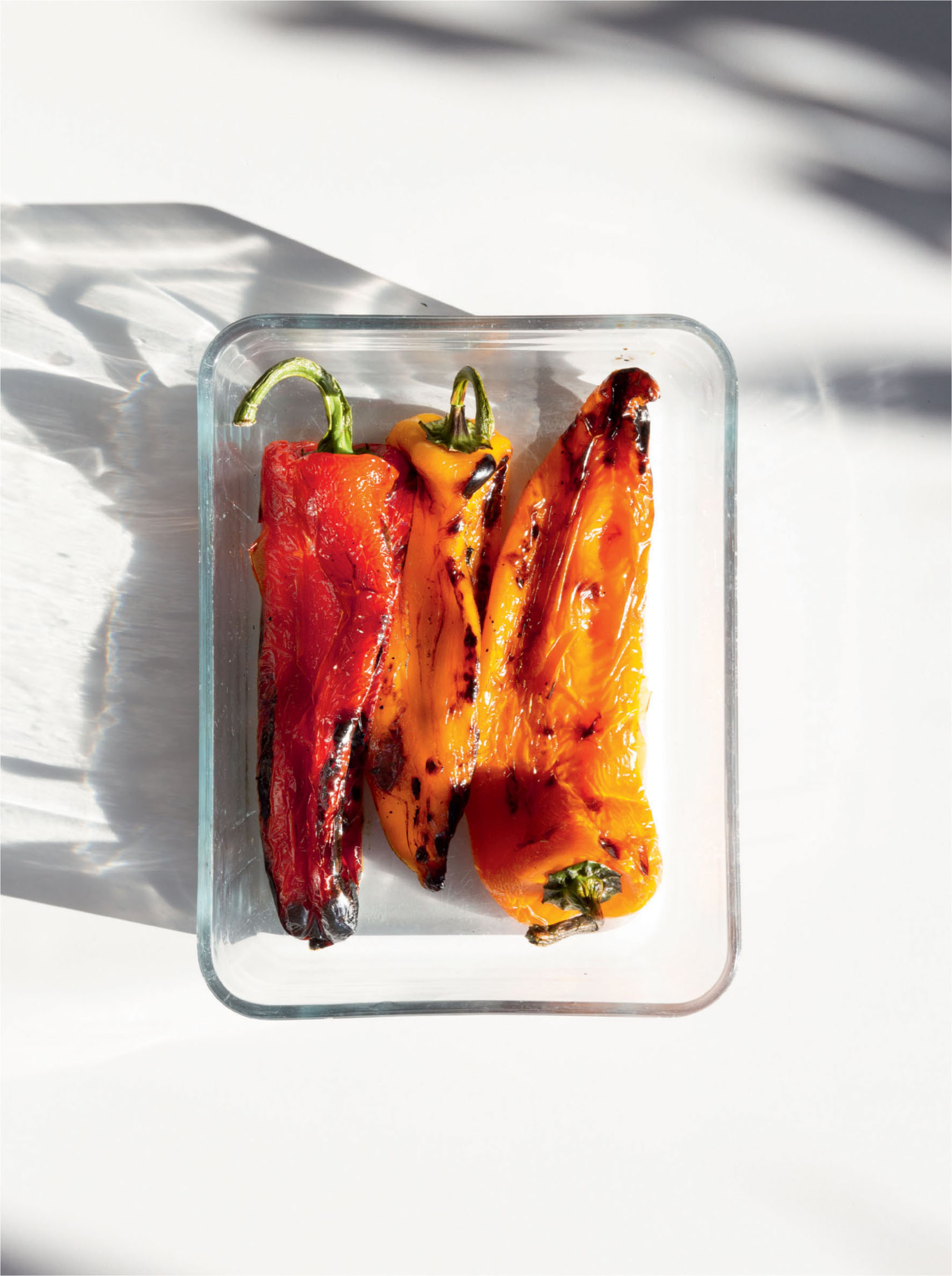
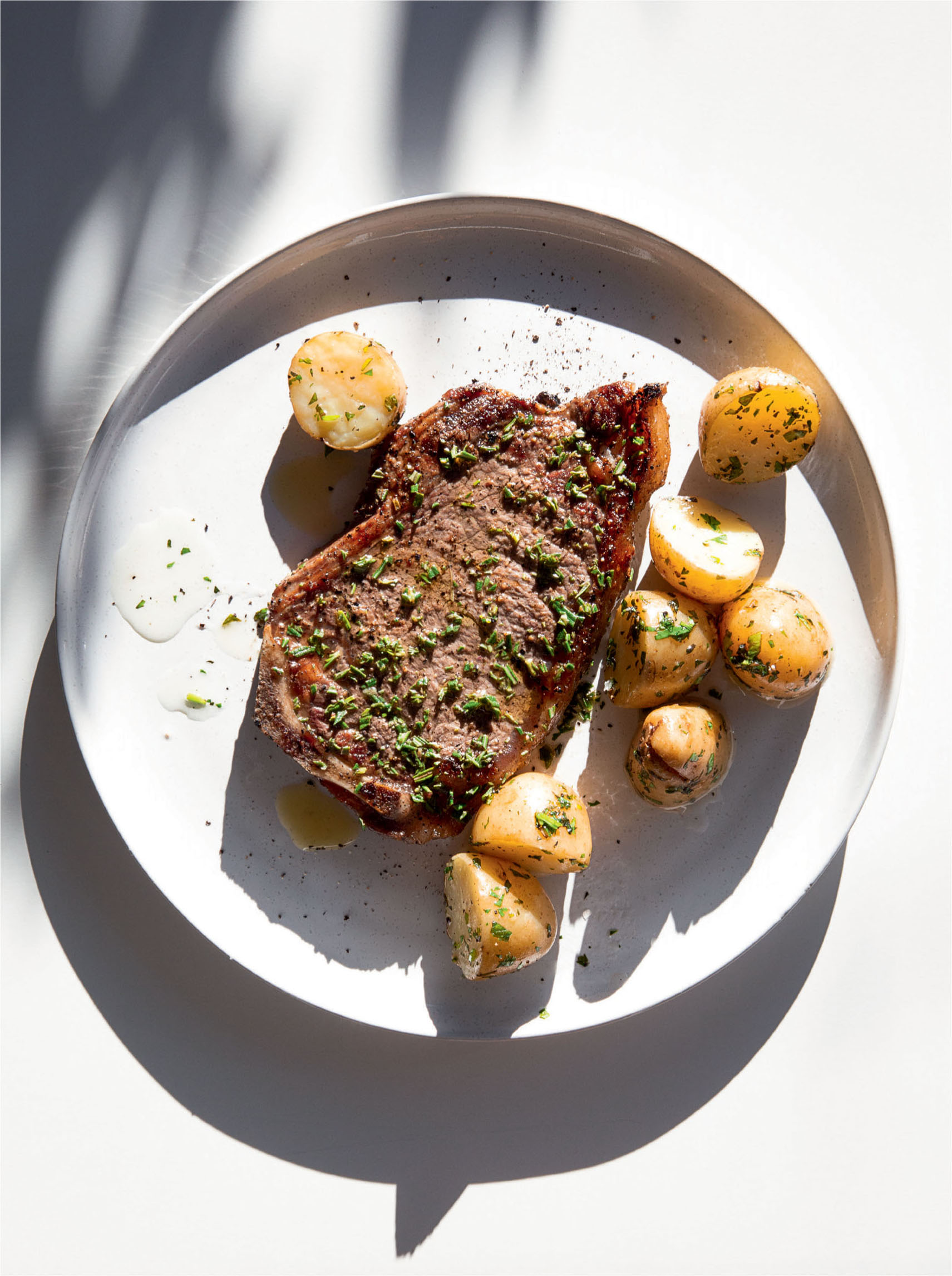
GAS VS CHARCOAL
CHARCOAL
Purists prefer charcoal for the smoky flavour, and I personally love that you can chuck rosemary, thyme, bay, sage or oregano on to the coals for a wonderful herbal scent as you cook. A kettle or lidded barbecue is really helpful for cooking your food evenly – if you’re just using a very simple open grill or disposable barbecue, a really large inverted metal bowl will do at a pinch.
You will need: firelighters and long matches, or a long-handled lighter, as well as the charcoal. Set a couple of firelighters or plenty of scrunched-up paper under the coal, light them, then let the coal burn (20–25 minutes for lumpwood, up to 40 for briquettes) until they’re evenly glowing and chalky grey – then you’re good to start putting the food on.
Quick-cook items can be done over the coals (like things on sticks or steak). If you’re cooking items for longer, like a whole chicken or thighs and drumsticks, you’ll want to carefully move the coals to one side, and cook over the indirect heat on the other side of the barbecue.
Bear in mind, if you’re barbecuing for a long time, you will want to have another load of hot coals ready to tip onto the barbecue for when your first lot has died down – this is easy to get going in an inexpensive chimney starter.
GAS
For ease and convenience, gas is incredibly helpful. You certainly get a slightly different, less smoky finish on your food, but with the lid down the barbecue will heat up in under 10 minutes, and you can regulate the intensity of the flame just by turning the dial – very hassle-free. You may find, depending on your model, that there are hot and cold spots, so, using something fairly inexpensive like grilled vegetables, do a little test moving your food around to see where the hot and cool spots are.
ESSENTIAL KIT
Other than a barbecue, there’s very little kit that you need, so I’d start with:
TONGS: Now, a key consideration with barbecuing is cross-contamination. If you put your raw chicken on the barbecue with your tongs, flip it over halfway, then take it off, all with the same tongs without washing in between, you’ve just potentially contaminated the cooked chicken with salmonella. Get two sets of long-handled tongs, one for raw meat and one for cooked, and don’t confuse them.
FLIPPER: A long-handled flipper is helpful for burgers – again, you should use two: one for raw and one for cooked meat.
TRAYS: The same goes with trays or dishes – use one to take your raw, marinated food out to the barbecue, and once it’s cooked, transfer the food on to a clean, fresh tray or plate.
OTHER: You do tend to get other bits of kit in a barbecue set – long-handled forks and such, but I tend to stick to the tongs and the flipper, as they’ll pick up and turn most things. A very stiff wire brush is helpful for cleaning the grill.
Note on the recipes: When the recipe instructs you to add the meat, fish or veg to the barbecue, your barbecue should already be hot and ready to cook on, whether using gas or coals – see here.
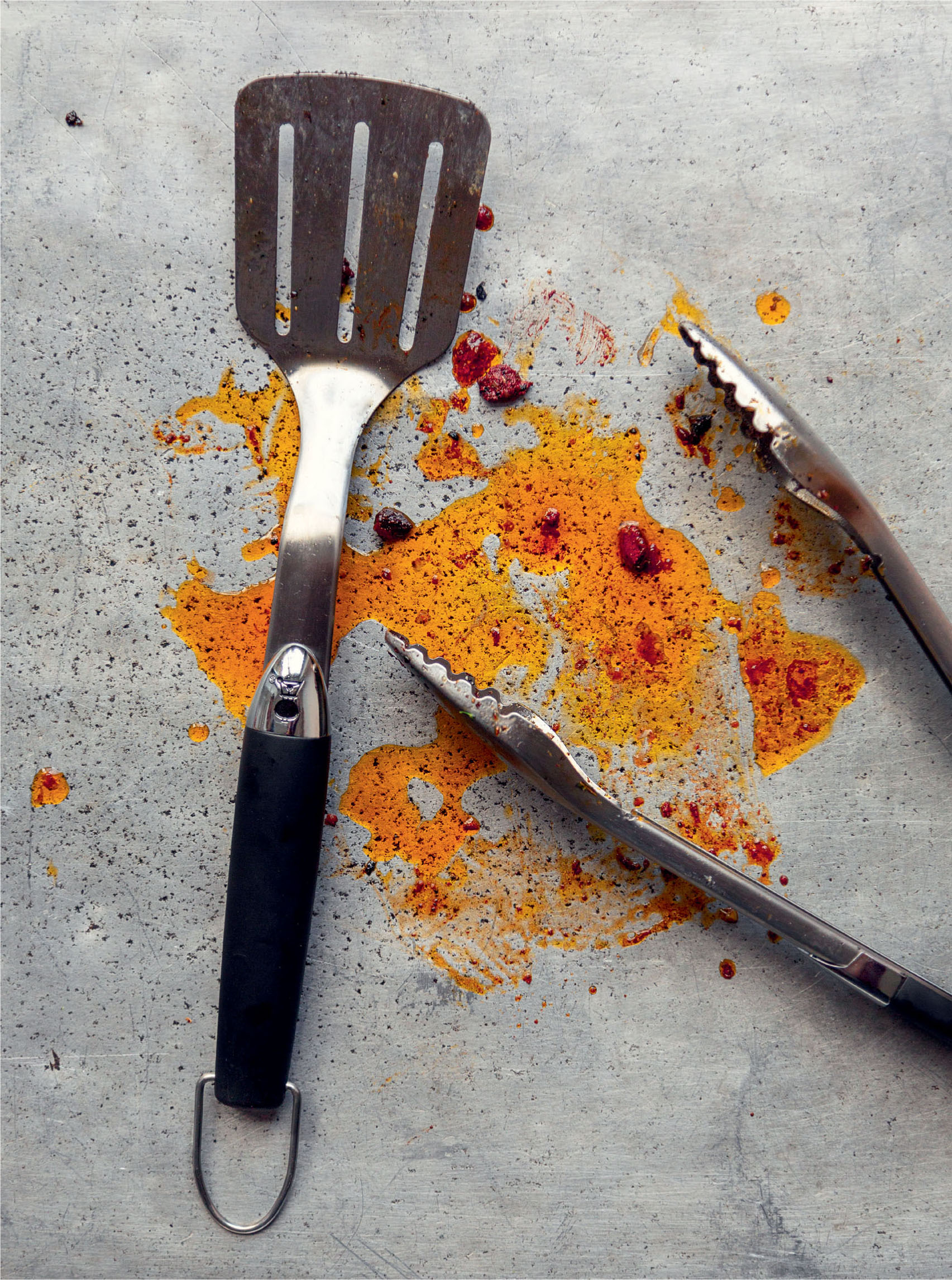
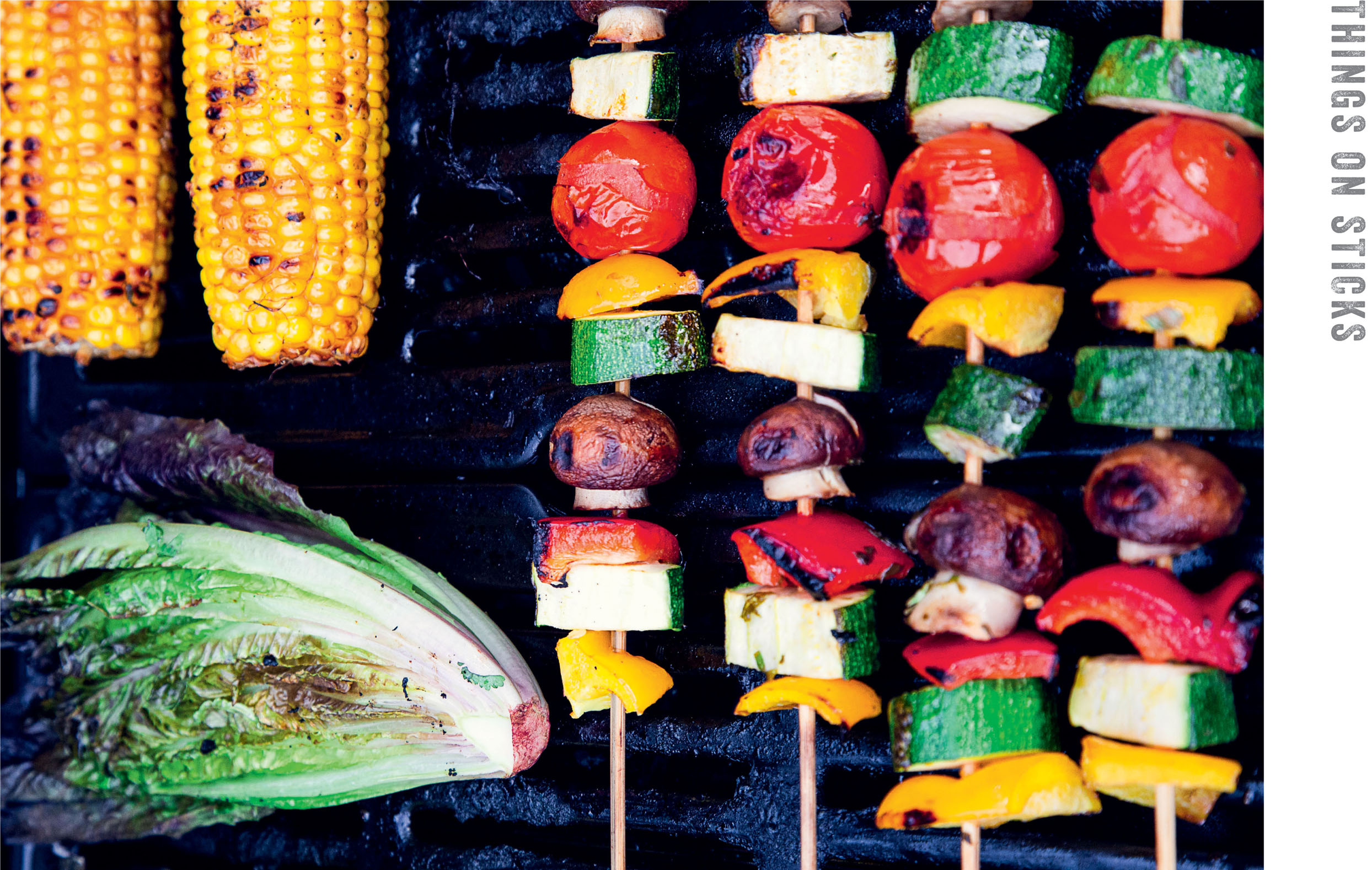
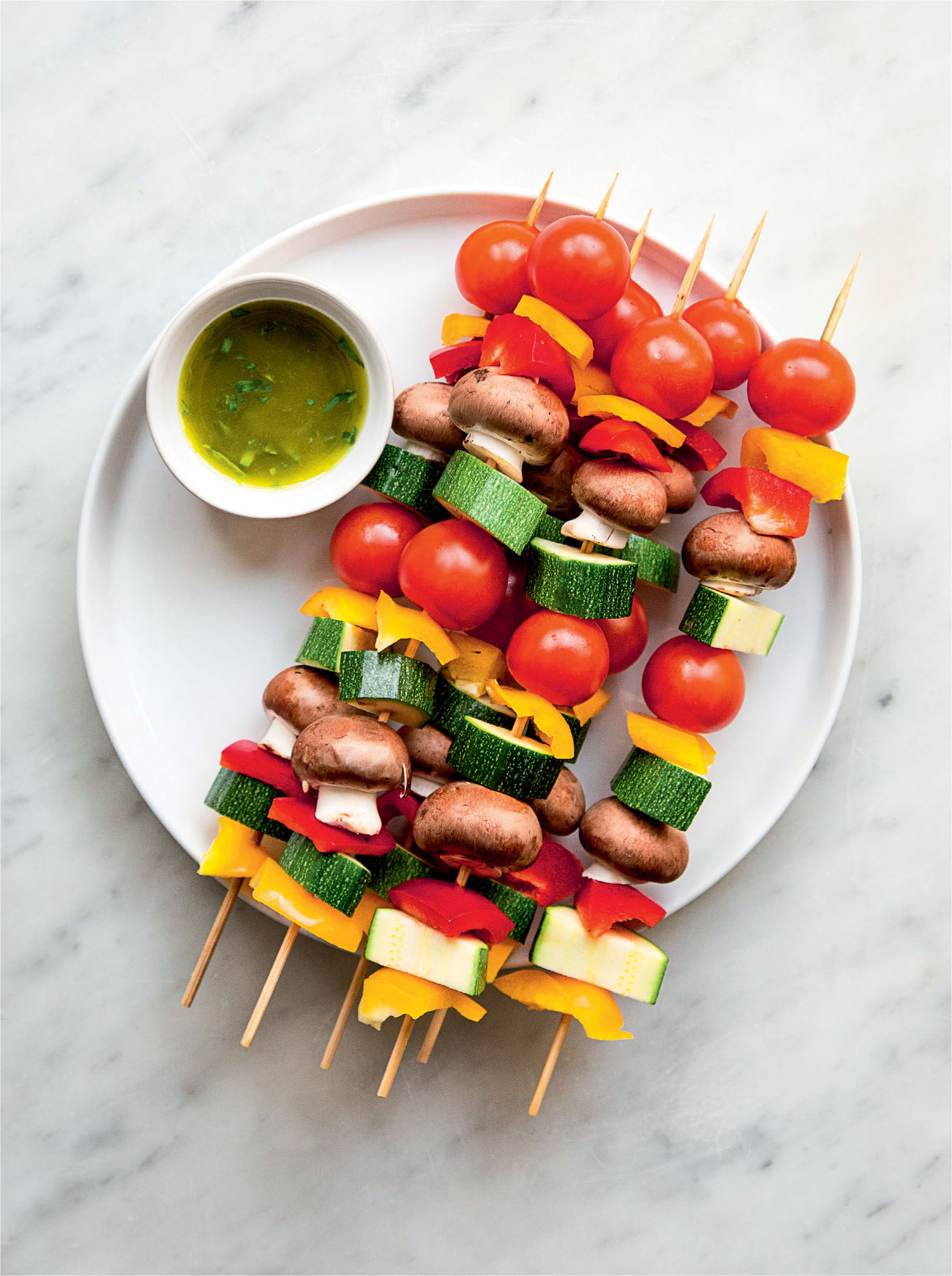
I love food on sticks – it’s both a practical and a decorative way to cook a variety of meat, vegetables or fish quickly, and a great way to kick off a barbecue, as you’ll have prepared everything in advance. There’s good culinary precedent for it – it makes me think of eating proper satay at the roadside in Asia, where incredibly delicious marinated meat skewers are barbecued on open grills. It’s easy to make vegetarian or vegan versions – try the options below for paneer, halloumi or tofu with a variety of vegetables.
This chapter includes suggestions for things you can put on sticks, the quantities you might need, and, in the pages that follow, the simple marinades that you can use for any of the below.
A note on skewers: the metal ones are really the best, as they will heat up and help to cook your food from the inside. If using bamboo or wooden ones, soak them in water for 30 minutes or so before you start cooking.
BEEF, PORK, LAMB & CHORIZO
With beef, pork or lamb, you want cuts that will stay tender when cooked quickly.

WHAT TYPE?
BEEF: rump steak, or sirloin if you’re splashing out.
PORK: go for tenderloin, pork steaks or chops.
LAMB: try lamb rump or lamb steaks.
CHORIZO: use mini cooking chorizo sausages, or cut 1cm rounds from a larger chorizo sausage.
With beef, pork or lamb, you can cut the meat into roughly 2.5cm cubes, but I prefer to cut the meat into long strips, about 1.5cm wide and deep, then thread the strips back and forward on to skewers in an S shape, push them down, and continue – that way you get the maximum surface area to nicely char on the barbecue, and only have to flip the skewer on two sides rather than four.
HOW MUCH?
Allow about 100g of meat per person as a starter. You can intersperse vegetables from the veg section and chorizo along with the meat if you wish, or make them up as separate skewers.
Pick a marinade from the suggestions on the following pages, make it up in a large shallow bowl (rectangular glass Pyrex dishes are good for this), then stir through the strips of meat.
Thread the meat on to the skewers, then cover and leave to marinate in the fridge for a couple of hours to overnight.
Barbecue
Once your barbecue is good and hot (see here), lay the skewers on the grill and cook for 6–7 minutes, covered if your barbecue can be covered. Turn the skewers over and give them another 6–7 minutes or so. The meat should be well charred on the outside, and a thermometer inserted into the thickest part of the flesh (don’t hit the metal skewer, or the reading will be off) should show at least 70°C.
Let them rest on a plate for 3–4 minutes, then serve with your choice of dipping sauce (see here).
SALMON

WHAT TYPE?
Use big salmon fillets that you can cut into even, 4cm chunks. (You need to have decent-sized chunks, as the fish is very quick to cook.)
HOW MUCH?
Allow 100–120g of salmon per person as a generous starter. You can make up the salmon skewers by themselves, or pick a variety of vegetables to flesh them out – I like to use red and yellow peppers or cherry tomatoes for colour.
Pick a marinade from the suggestions on the following pages, omitting any lime or lemon juice, as this will ‘cook’ the salmon too early.
Thread the salmon and any vegetables on to the skewers, then cover and leave to marinate in the fridge for a couple of hours to overnight.
Barbecue
Once your barbecue is good and hot (see here), gently brush the grill with olive oil. This is important, as the fish will want to stick. Lay the salmon skewers on the grill and cook for 5 minutes, covered if your barbecue can be covered. Turn the skewers over and give them another 4–5 minutes or so. The fish should be well charred on the outside, and a thermometer inserted into the flesh (don’t hit the metal skewer, or the reading will be off) should show at least 65°C.
Serve immediately, with your choice of dipping sauce (see here).
PRAWNS

WHAT TYPE?
Ideally, use whole, shell-on prawns, or my favourite, the headless type with half a shell and a tail on, readily available in supermarkets; the shell will protect the delicate flesh from the heat of the barbecue. You can also use shelled prawns, but they’ll cook much quicker.
HOW MUCH?
Allow 80–90g of prawns per person as a starter (a bit more if they’re fully shell-on with heads, etc.). You can make up the prawn skewers by themselves, or add in your choice of vegetables from the vegetable section overleaf.
Pick a marinade from the suggestions on the following pages, omitting any lime or lemon juice, as this will ‘cook’ the prawns too early. If you’re going to make my favourite pepper, salt and lime prawns, don’t marinate them before cooking – just toss the raw prawns with a little olive oil.
Thread the prawns on to the skewers, then cover and leave to marinate in the fridge for a couple of hours to overnight. (Unless you’re just doing them with olive oil, in which case you’re ready to cook straight away.)
Barbecue
Once your barbecue is good and hot (see here), gently lay the prawn skewers on the grill and cook for 2–3 minutes, covered if your barbecue can be covered. Turn the skewers over, using a pair of tongs, and give them another 2–3 minutes. They are ready when they’re bright pink on the outside, and the shells should be a little charred.
Serve immediately, with your choice of dipping sauce (see here).
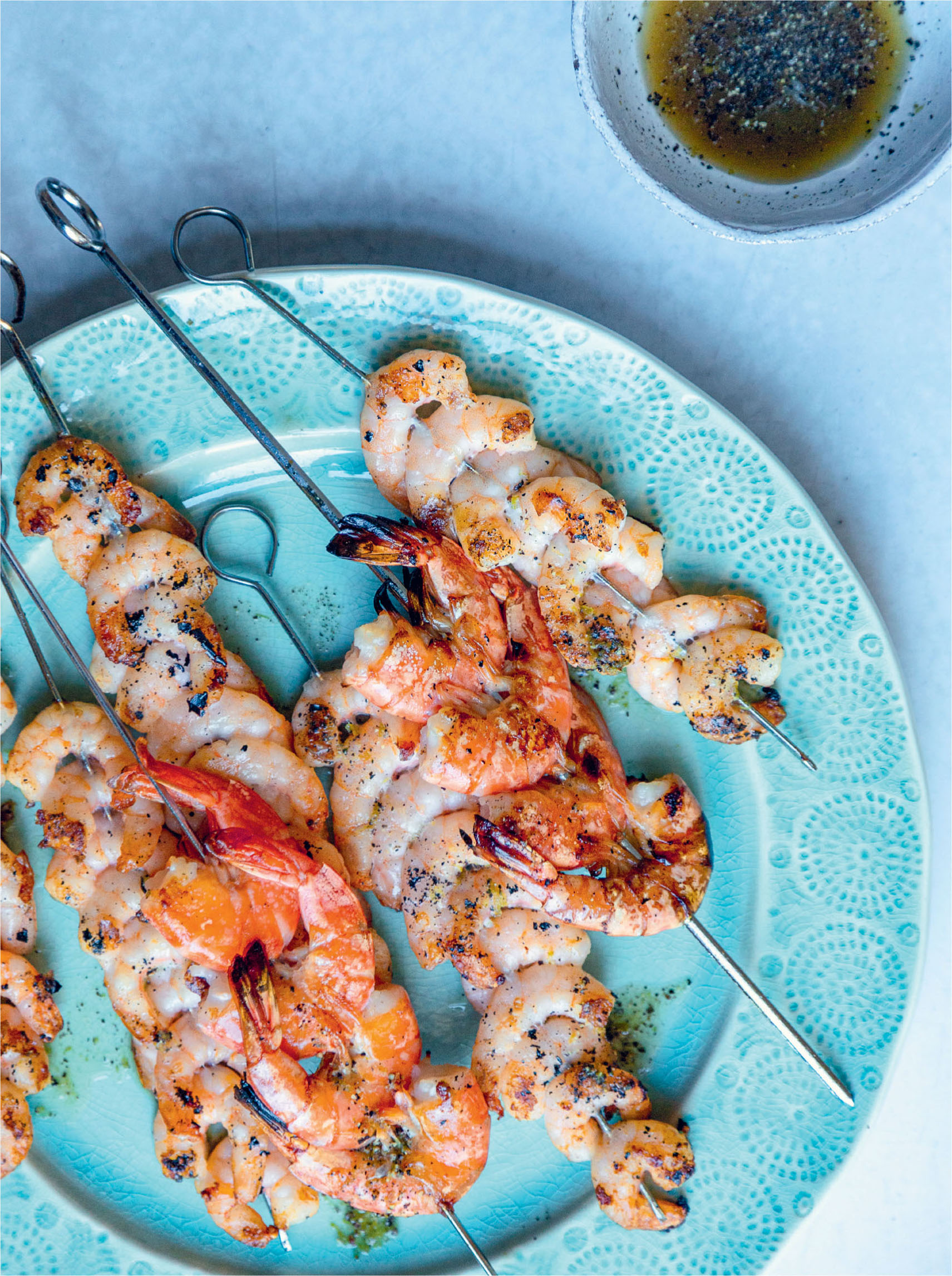
VEGETABLES
Marinated vegetables work beautifully on skewers. Use the combination below, or add halloumi, paneer or tofu. I like a good mixture of colours and texture on skewers, and would usually go for the following:

WHAT TYPE?
150g whole baby chestnut mushrooms
200g baby courgettes, cut into 1.5cm squares
1 red pepper, cut into 1.5cm squares
1 yellow pepper, cut into 1.5cm squares
300g whole cherry tomatoes
1 red onion, cut into small wedges
1 aubergine, cut into 1.5cm cubes
HOW MUCH?
The quantity of vegetables above will make up at least 15–20 skewers without any further additions, so they’re a generous veggie starter for a crowd.
Pick a marinade from the suggestions on the following pages, make it up in a large shallow bowl (rectangular glass Pyrex dishes are good for this), then stir through the vegetables.
Thread the veg on to the skewers, then cover and leave to marinate in the fridge for a couple of hours to overnight.
Barbecue
Once your barbecue is good and hot (see here), lay the skewers on the grill and cook for about 6–7 minutes, covered if your barbecue can be covered. Turn the skewers over and give them another 6–7 minutes or so. The vegetables should be cooked through, and nicely charred in places – flip them and give them another 3–4 minutes if in doubt.
Serve immediately, with your choice of dip (see here).
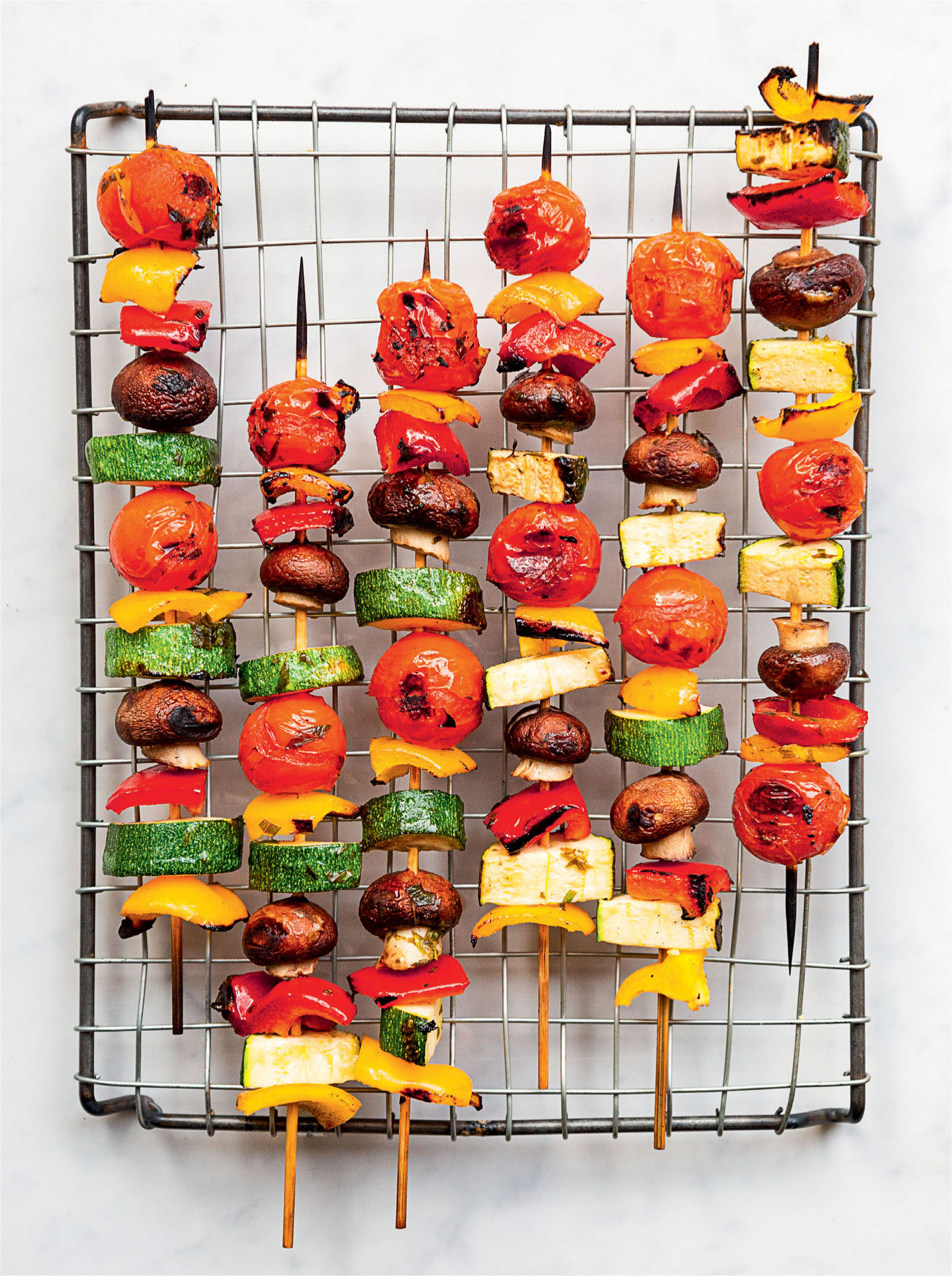
HALLOUMI, PANEER & TOFU
Halloumi, paneer and tofu all barbecue really well, and a good marinade will add flavour and texture from the interesting charred bits.

WHAT TYPE?
HALLOUMI: pick the nicest one you can, as it makes a real difference to the flavour and texture.
PANEER: you can buy this packaged in blocks (a bit like feta cheese) in many supermarkets – it works beautifully on the barbecue.
TOFU: you definitely want a block of firm tofu for this (silken will fall apart). My favourite brand is Tofoo – the smoked one is particularly good.
Cut your halloumi, paneer or tofu chunks into 2.5cm cubes – not too small, or they’ll be difficult to skewer.
HOW MUCH?
Allow about 80–100g of halloumi, paneer or tofu per person as a starter. You can intersperse vegetables from the veg section as well if you wish, or make them up as separate skewers.
Pick a marinade from the suggestions on the following pages, make it up in a large shallow bowl (rectangular glass Pyrex dishes are good for this), then stir through the paneer, tofu or halloumi cubes.
Thread the cubes on to the skewers, then cover and leave to marinate in the fridge for a couple of hours to overnight.
Barbecue
Once your barbecue is good and hot (see here), lay the skewers on the grill and cook for about 5 minutes, covered if your barbecue can be covered. Turn the skewers over and give them another 5 minutes or so, then turn them on to their sides to char for another 3–4 minutes. The cheese or tofu should be evenly charred on the outside.
Serve immediately, with your choice of dipping sauce (see here).
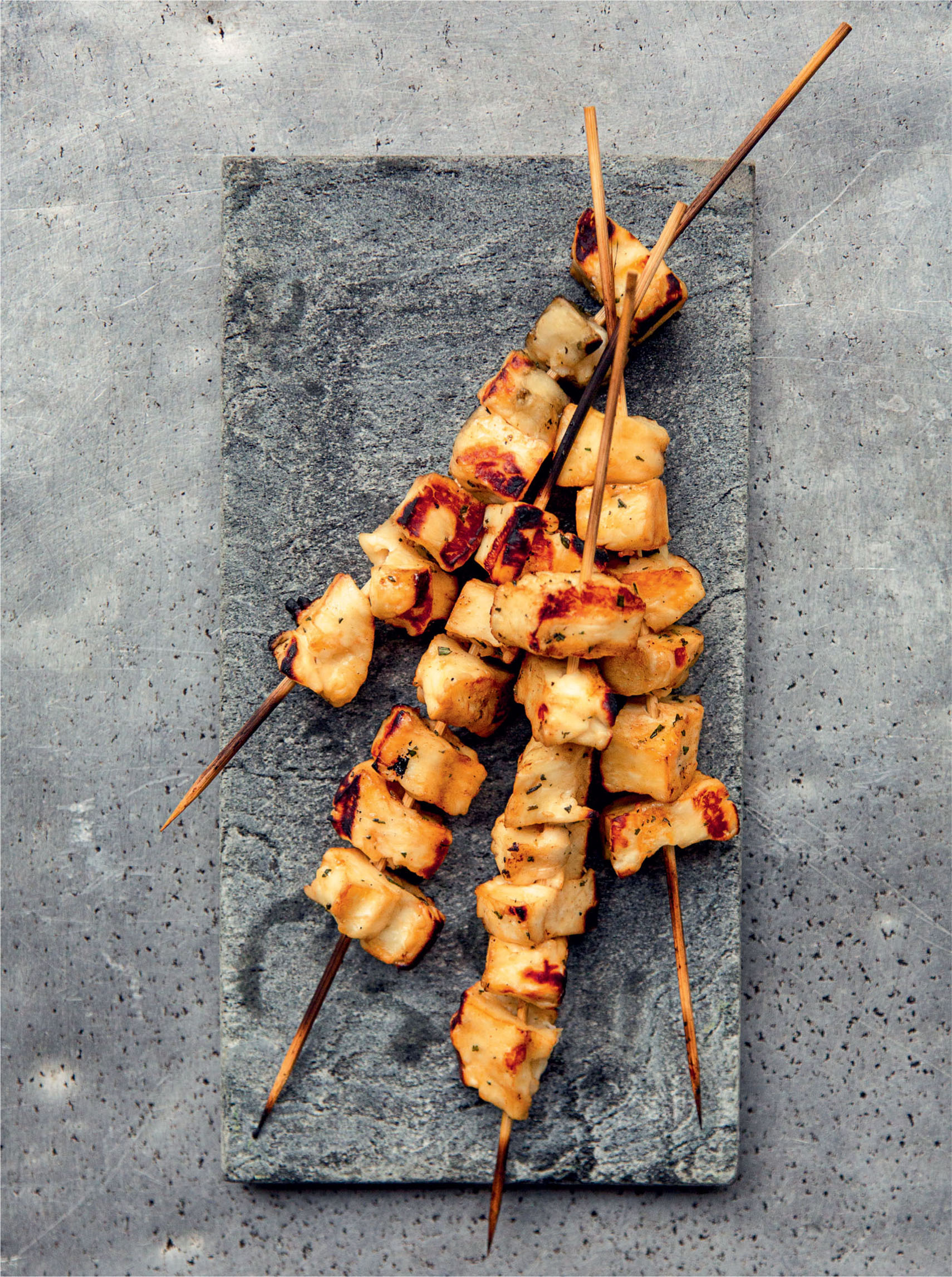
CHICKEN
Chicken breast is a good option for skewers, as they’ll cook quickly and any of the marinades you pick will help tenderise the chicken.

WHAT TYPE?
Cut chicken breasts into 2.5cm chunks – or I quite like to use packets of mini fillets, as you can weave them on to the skewers without any further chopping.
HOW MUCH?
Allow about 100g of chicken per person as a starter. I prefer to make up chicken skewers by themselves, and serve vegetable skewers separately on the side.
Pick a marinade from the suggestions on the following pages, make it up in a large shallow bowl (rectangular glass Pyrex dishes are good for this), then stir through the chicken pieces.
Thread the chicken on to the skewers, then cover and leave to marinate in the fridge for a couple of hours to overnight.
Barbecue
Once your barbecue is good and hot (see here), lay the chicken skewers on the grill and cook for 6–7 minutes, covered if your barbecue can be covered. Turn the skewers over and give them another 6–7 minutes or so. The chicken should be well charred on the outside, and a thermometer inserted into the thickest part of the flesh (don’t hit the metal skewer, or the reading will be off) should show at least 70°C.
Serve immediately, with your choice of dipping sauce (see here).
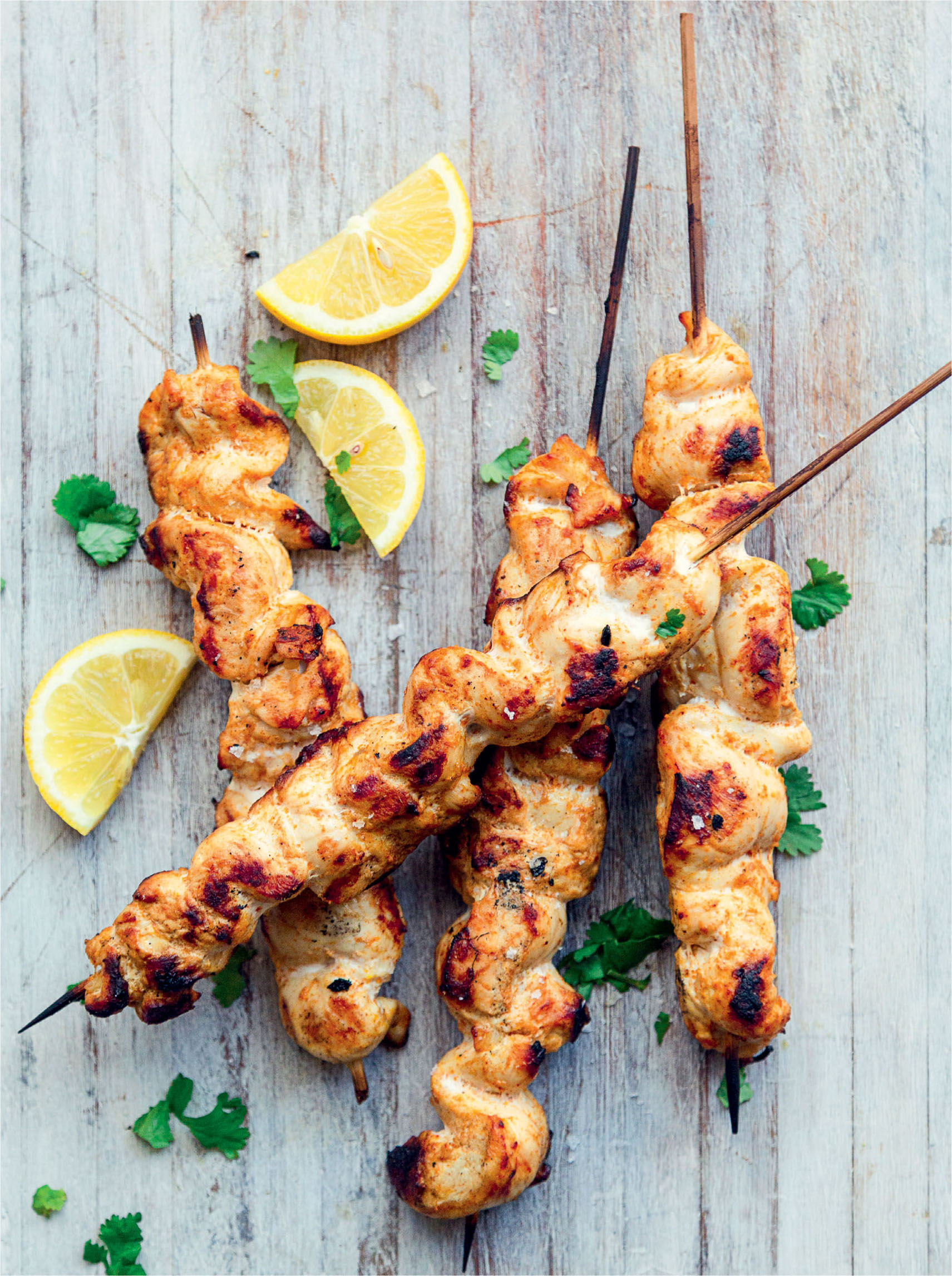
PEPPERCORN, SALT & LIME
MARINADES
I first had this barbecue dressing in Vietnam, where they served freshly grilled prawns in the shell with a dipping bowl of this incredible mixture alongside; I give you my version below. It’s very simple and very effective – do use really good, freshly ground black peppercorns, or try a variation with Sichuan peppercorns. This will make enough for about 400g of meat, fish or veg.



